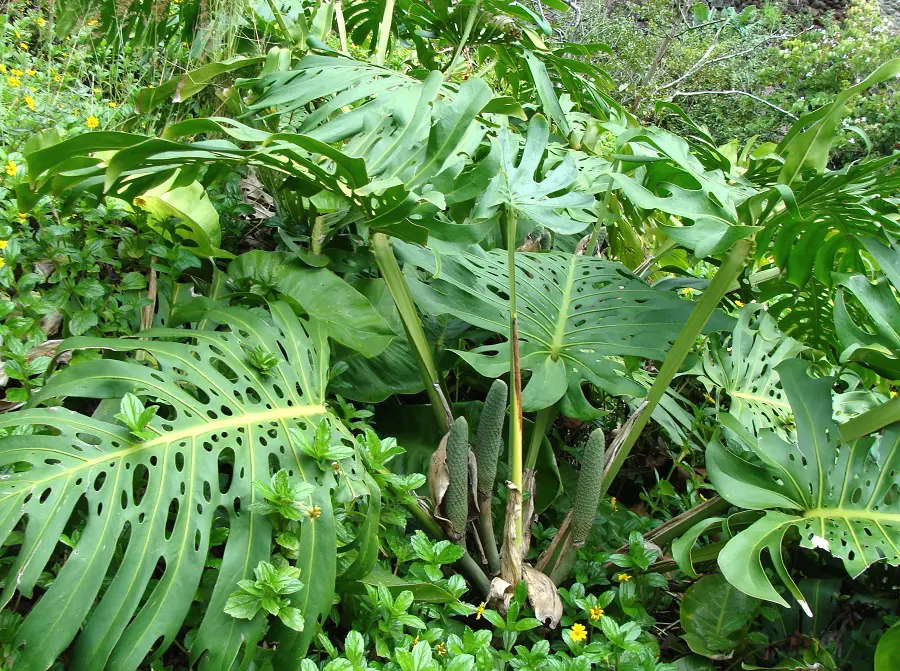- You are here:
- Plant of the month: Monstera


Monstera
This trendy houseplant has it all: the looks, a rugged character and air-purifying skills. As a result, the Monstera has become a massive Instagram hit and urban jungle must-have. This month the Swiss cheese plant will be centre stage even more. An excellent opportunity to share the low-down about this unique houseplant’s remarkable properties, origin, varieties and care!
Swiss cheese plant
Monstera originates from Central America (Mexico) and is part of the Araceae family. Monstera is also known as the Swiss cheese plant. It was long thought that the holes in the Swiss cheese plant resulted from a defect in the plant’s DNA. But scientists have now established that the holes allow the leaves to capture sunlight better for photosynthesis. A handy side-effect is that in the jungle, rainwater drips through the holes so that it reaches the plant’s roots.

Varieties
Large green leaves with holes … you can’t miss it. But there are nonetheless different varieties. We’ve listed them for you:
Monstera Deliciosa
Monstera Deliciosa, identifiable by the holes in the leaves. The larger the green leaves become, the more holes appear in the leaves. A true jungle plant that looks stunning in any living room or office.
Monstera Pertusum
Monstera Pertusum cannot be recognised by the moss pole up which the plant grows. The Pertusum has different aerial roots from the Deliciosa which allow it to hold on to the moss pole.
Monstera Monkey Mask
With the Monstera Monkey Mask - also known as Monstera Obliqua - the holes are more in the middle of the leaf, by the midrib, and the ends of the leaf are closed.
Variegated Monstera ‘Variegata’
More rarely seen is the Swiss cheese plant with variegated leaves: Monstera deliciosa ‘Variegata’. The leaves have white spots, and are sometimes even entirely white. You don’t come across them very often because the plant is hard to propagate. It is also more delicate than its cousins, since the white spots do not contain any chlorophyll, the leaf pigment with which plants convert light into energy. That means that the ‘Variegata’ is less robust.
How to keep a Monstera happy
This houseplant is easy to look after. Monstera prefers a sport in (partial) shade. Make sure that the soil is always slightly damp in spring and summer, without leaving the plant’s roots standing in a layer of water. In autumn and winter wait until the soil has dried out thoroughly before you water the plant again. The easy care means that Monstera is also a popular plant in many offices.
Tip: Dull leaves will shine again if you wipe them down with some buttermilk on a cloth.
 Nederlands
Nederlands  English
English  Français
Français  Deutsch
Deutsch  Español
Español  Româna
Româna  Polski
Polski  Slovensky
Slovensky  Slovenija
Slovenija  Italiano
Italiano  Svenska
Svenska  Magyar
Magyar  Latviešu
Latviešu  Suomi
Suomi  ελληνικά
ελληνικά  Ceština
Ceština  Hrvatski
Hrvatski 



